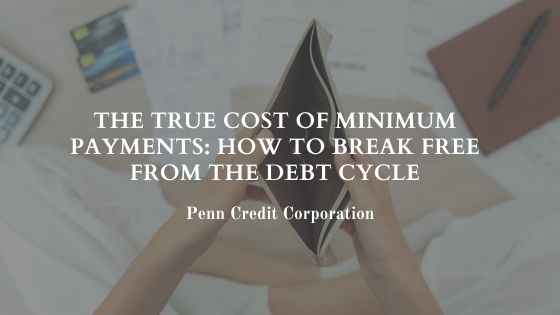Making only the minimum payment on your debts may seem like a manageable way to stay afloat financially, but it comes with a hidden cost—one that can keep you trapped in debt for years, even decades. Understanding the real impact of minimum payments and adopting strategies to break free from the cycle can help you regain control of your finances.
The Hidden Cost of Minimum Payments
Most credit card issuers calculate the minimum payment as a small percentage of the outstanding balance, typically around 2-3%. While this may make monthly payments seem affordable, it also means that a significant portion of your payment goes toward interest rather than reducing the principal balance. As a result, debt accumulates over time, making it difficult to pay off even modest balances.
For example, if you have a $5,000 balance on a credit card with a 20% interest rate and only make the minimum payment of 2% each month, it could take you over 30 years to fully pay off the debt—and you would end up paying thousands in interest alone.
The Psychological Trap
Minimum payments create the illusion of affordability while encouraging continuous borrowing. Many people continue using their credit cards because the monthly payment seems manageable, only to find themselves in a deeper financial hole over time. The debt cycle becomes a pattern that is difficult to break without a conscious financial strategy.
How to Break Free from the Minimum Payment Trap
1. Pay More Than the Minimum
Even a small increase in your monthly payment can make a significant difference. Paying an extra $50 or $100 each month reduces the principal faster, shortens the repayment timeline, and lowers the total interest paid.
2. Use the Debt Avalanche or Snowball Method
- The Debt Avalanche Method focuses on paying off the highest-interest debt first while making minimum payments on others. This strategy saves the most money on interest.
- The Debt Snowball Method prioritizes paying off the smallest balances first, creating momentum and motivation to tackle larger debts.
3. Consider Balance Transfers or Debt Consolidation
If you have high-interest debt, transferring your balance to a credit card with a 0% introductory interest rate or consolidating multiple debts into a lower-interest loan can make repayment more manageable and cost-effective.
4. Create a Budget and Cut Unnecessary Expenses
Identify areas where you can reduce spending and redirect those funds toward debt repayment. Simple changes, like eating out less or canceling unused subscriptions, can free up money to pay down balances faster.
5. Increase Your Income
Consider picking up a side job, selling unused items, or negotiating a raise at work to generate additional income that can go directly toward debt repayment.
Final Thoughts
Making only the minimum payments on your debt can keep you stuck in a cycle that drains your financial resources and limits your future options. By taking proactive steps to pay off debt faster, you can achieve financial freedom, reduce stress, and build a more secure financial future. The sooner you commit to paying more than the minimum, the sooner you’ll break free from the burden of long-term debt.

